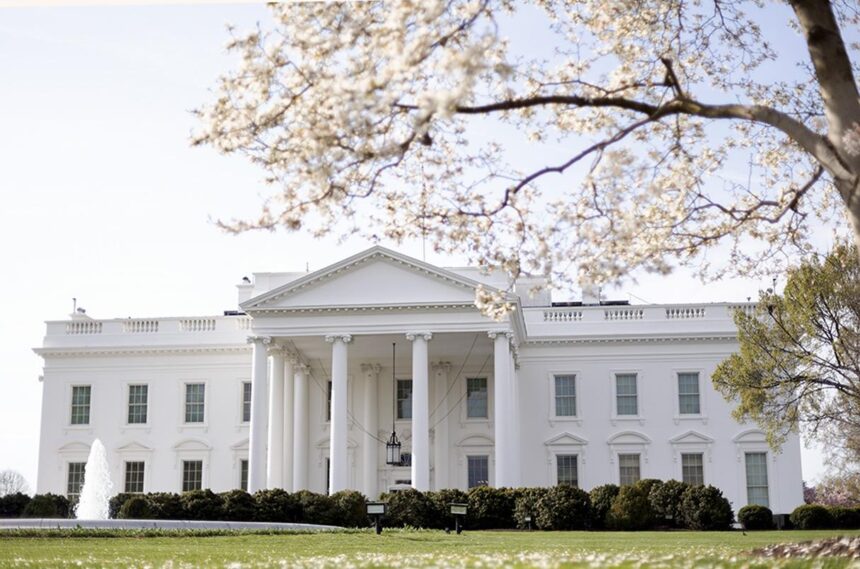The White House has announced the restoration of previously stalled research funds to the Centers for Disease Control and Prevention (CDC), signaling a renewed federal commitment to public health initiatives. The decision comes after months of budgetary gridlock that had delayed crucial studies on infectious diseases and chronic health conditions. With the infusion of these funds, the CDC is expected to accelerate its research efforts aimed at improving national health security and advancing scientific knowledge.
White House Unveils Plan to Release Frozen CDC Research Funds
The Biden administration has announced the release of previously frozen funds intended for the Centers for Disease Control and Prevention’s critical research projects.This initiative aims to revive key studies that had faced delays due to budgetary constraints and administrative holdbacks. The reinstated funding will support efforts in public health surveillance, vaccine development, and infectious disease prevention, reaffirming the government’s commitment to strengthening national health infrastructure.
Key highlights of the plan include:
- $150 million allocated to accelerate COVID-19 variant tracking
- Expansion of data-sharing platforms to improve real-time epidemic response
- Support for early-career scientists focusing on emerging infectious diseases
- Investment in innovative laboratory technologies to enhance research accuracy
| Research Area | Funding (in millions) | Expected Impact |
|---|---|---|
| Vaccine Innovation | 75 | Accelerate development of next-gen vaccines |
| Disease Surveillance | 50 | Enhanced tracking of outbreaks nationwide |
| Public Health Data Systems | 25 | Improved data integration and accessibility |
Impact of Restored Funding on Public Health Initiatives
Restored funding to the CDC is set to revive several public health initiatives that had previously faced significant delays due to budget constraints. These programs, critical for disease surveillance and prevention, will now be able to expand their reach and effectiveness. Such as,vaccination campaigns will receive enhanced support,enabling wider distribution and increased community engagement across underserved regions. Additionally,funding will bolster research focused on emerging infectious diseases,improving preparedness and response capabilities.
Key areas benefiting from renewed investment include:
- Chronic disease prevention: Expanded screening and education efforts targeting diabetes and heart disease.
- Environmental health monitoring: Enhanced data collection to track the impact of pollution on community wellness.
- Health equity programs: Initiatives aimed at reducing disparities in healthcare access for minority populations.
| Initiative | Previous Status | Expected Impact |
|---|---|---|
| Vaccine Outreach | Paused | Expanded access in rural areas |
| Infectious Disease Research | Limited funding | Improved outbreak response |
| Health Equity Initiatives | Underfunded | Reduced healthcare disparities |
Experts Weigh In on Priority Areas for CDC Research Investment
Leading public health experts have identified several critical areas where renewed CDC research funding could accelerate breakthroughs and improve national health security. Among the top priorities are infectious disease surveillance enhancements and the expansion of preparedness strategies for emerging health threats. Specialists emphasize the need for advanced data analytics capacity to enable real-time outbreak tracking and response, while also investing in vaccine development technologies that adapt swiftly to mutating pathogens.
The experts also highlight the importance of addressing chronic disease disparities that disproportionately affect underserved populations. Their recommendations include increased focus on environmental health studies and behavioral health interventions. Below is an overview of the key priority areas gaining momentum with the restored CDC funding:
| Priority Area | Main Objective | Expected Impact |
|---|---|---|
| Infectious Disease Surveillance | Enhance data systems & real-time tracking | Faster outbreak detection and containment |
| Vaccine Research & Development | Accelerate adaptive vaccine technologies | Improved response to viral mutations |
| Chronic Disease Disparities | Reduce health inequities through targeted interventions | Better health outcomes in vulnerable groups |
| Environmental Health | Study impact of pollutants on public health | Inform policies for cleaner environments |
| Behavioral Health Strategies | Develop programs addressing mental wellness | Lowered rates of behavioral health disorders |
Policy Recommendations to Sustain CDC Funding and Enhance Transparency
To ensure the longevity and effectiveness of CDC funding, it is imperative that Congress and federal agencies adopt multi-year appropriations that shield critical research from annual budget uncertainties. Additionally,establishing a dedicated oversight committee focused on epidemic preparedness can streamline resource allocation and mitigate bureaucratic delays. Embracing innovative funding mechanisms, such as public-private partnerships, would also promote sustainable investments while leveraging industry expertise to accelerate public health advancements.
Transparency can be significantly enhanced by mandating detailed, publicly accessible reporting on fund distribution and project outcomes.Implementing a standardized digital dashboard updated in real time would allow stakeholders, including the public, to track progress and expenditures effectively. Below is a proposed framework outlining key transparency measures:
| Measure | Purpose | Frequency |
|---|---|---|
| Thorough Annual Reports | Summarize funding usage and impact | Yearly |
| Real-Time Dashboard | Provide up-to-date financial and research data | Continuous |
| Stakeholder Engagement Sessions | Gather feedback and improve accountability | Quarterly |
In Conclusion
The White House’s decision to restore previously stalled funds to the CDC marks a significant step in reinforcing the nation’s public health initiatives. As the agency moves forward with renewed resources, experts anticipate a strengthened capacity to address current and emerging health challenges. The restored funding not only underscores the administration’s commitment to science-based responses but also aims to bolster preparedness for future public health crises. Stakeholders across government and health sectors will be closely monitoring the impact of this renewed investment in the weeks and months ahead.
